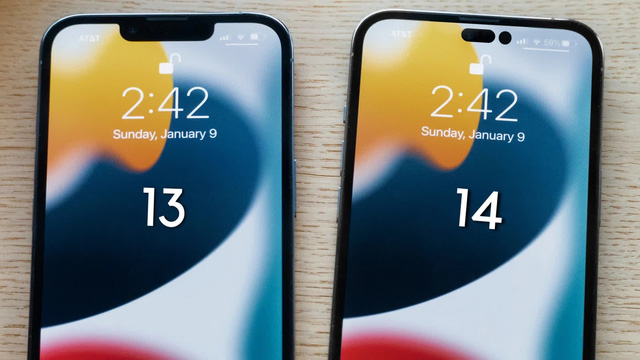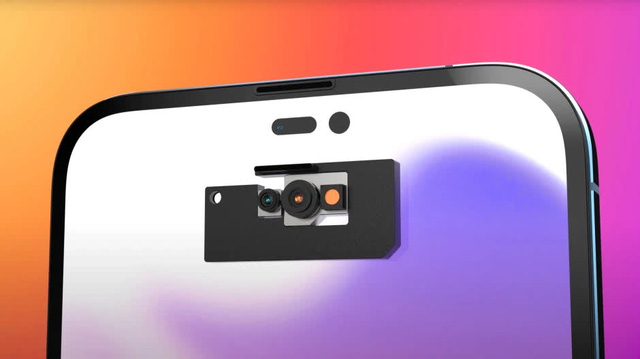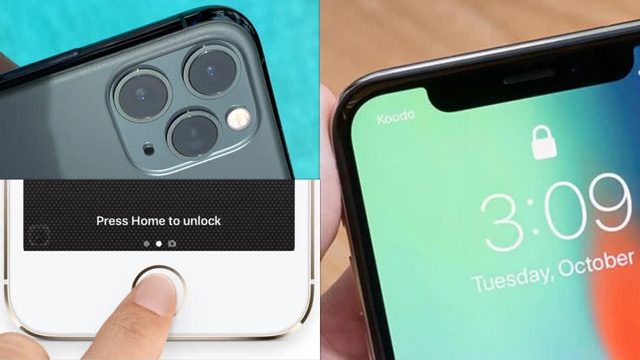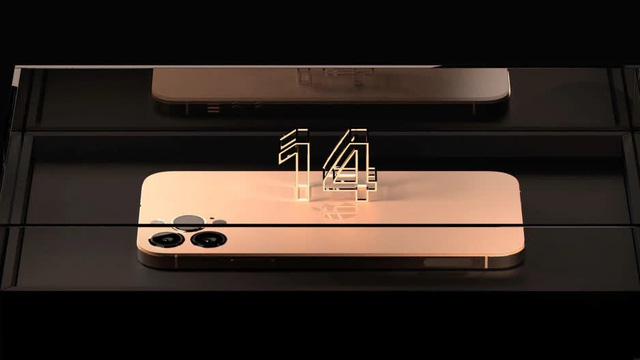iPhone 14 Pro with its strange hole-punch screen can teach Android smartphones a lesson about Apple’s design
- Tram Ho
One of the most interesting leaks recently can be mentioned is the “notch” design of the iPhone 14 Pro. Initially, the leaked render images of Jon Prosser showed that the notch design on the iPhone 14 Pro resembles the Galaxy S22, turning into a hole-punch in the middle. Later, analyst Ross Young confirmed that Apple would release an iPhone prototype with a pill-shaped punch-hole screen design on the iPhone 14 Pro and 14 Pro Max.

Just like that, a series of rumors from various sources suggest that the iPhone 14 Pro series will use a completely new design language with a screen containing two horizontal “i”-shaped holes.
Apple wants to make a difference
So far, many questions revolve around the above information: “Why does Apple do this?” First of all, we need to go back to why Apple’s Face ID sensor cluster takes up a lot of space and creates a rather large “rabbit ear” notch. In 2017, Apple first introduced the Face ID facial recognition sensor cluster consisting of eight parts: infrared projector, infrared light, infrared camera, proximity sensor, light sensor, speaker, conversation mic and front camera.
However, until the iPhone 13, ie 4 years later, Apple shortened this missing part when bringing the speaker to the edge of the chassis. And by 2022, sources believe that Apple has put a component close to the screen like it did with the speakerphone, the “i”-shaped hole will be where the selfie camera, projector and camera will be located. infrared camera.

Apple doesn’t want its products to look like Android smartphones
In addition to this strange hole punch, Apple can choose an elongated pill-shaped design and then put the entire sensor assembly in it. However, those lines can make the iPhone lose its own brand identity. In other words, this makes Apple products easily confused with other Android smartphones on the market.
The way that “apple defect” chose this design is actually nothing new because if we look at the first iPhone model and iPhone SE 2020, we will realize that they have not changed too much. Users will still find a Home button placed on the bottom edge and thick border around, which has characterized the iPhone for more than a decade.
In 2017, Apple refreshed the design of the iPhone but still created it with a unique character, easily recognizable anywhere. At that time, almost all Android phones used the new proportional screen, choosing to place the fingerprint sensor on the back or integrated in the power button and later under the screen. Meanwhile, Apple chose to go its own way with Face ID, thanks to which the “rabbit ears” became the iPhone’s brand identity.

Today, from the arrangement of the camera clusters on the iPhone 11 Pro, 11 Pro Max to the flat border design on the iPhone 12, it all makes Apple’s smartphones look more recognizable. However, many Android companies have also begun to learn these design details.
Last but not least, the iPhone is not the only Apple product with a different design. Its latest MacBook Pro models have been refreshed with a notch screen without the built-in Face ID sensor cluster. Besides helping to optimize the display space, Apple also wants its products to stand out and be more recognizable.
iPhone 14 Pro: Less is more?
Although the design of the new iPhone 14 Pro has not been confirmed, some fairly reliable figures such as Jon Prosser, Ming-Chi Kuo, Mark Gurman and Ross Young have pointed out the new changes. As Young once said, “Apple will monopolize the design of two holes like the rabbit ears of the past”.

If Jon Prosser’s renders are accurate, the iPhone 14 Pro and 14 Pro Max will be the new generation iPhone 4 with a titanium bezel sandwiched between two glass panels, rounded volume buttons, and a virtually flat camera. All this will create a perfect design for the iPhone 14 Pro and 14 Pro Max, bringing in huge sales for Apple thanks to the new changes.
Source : Genk
